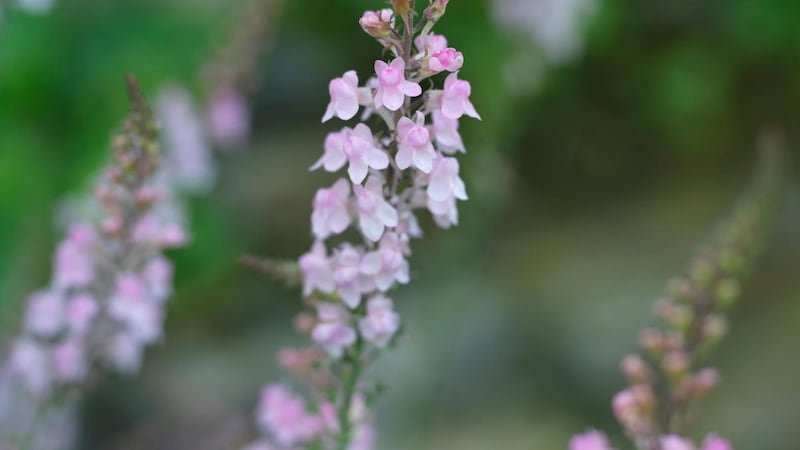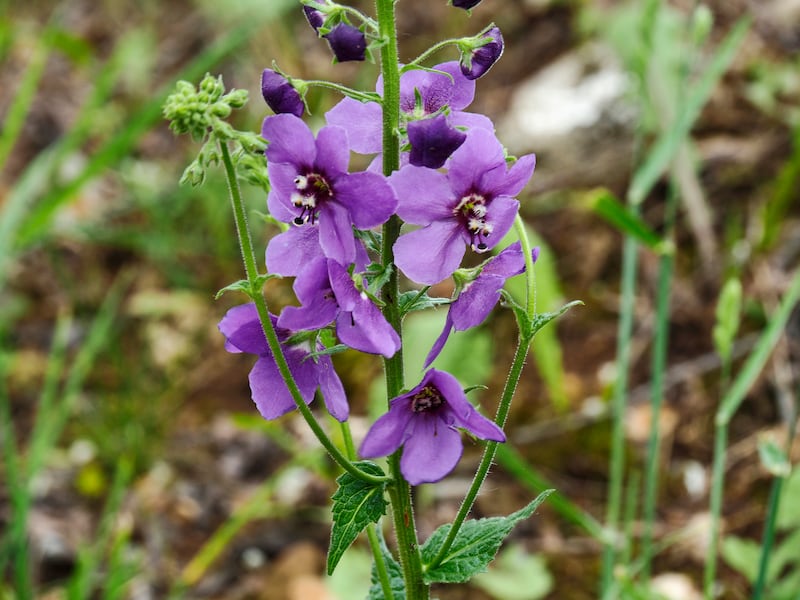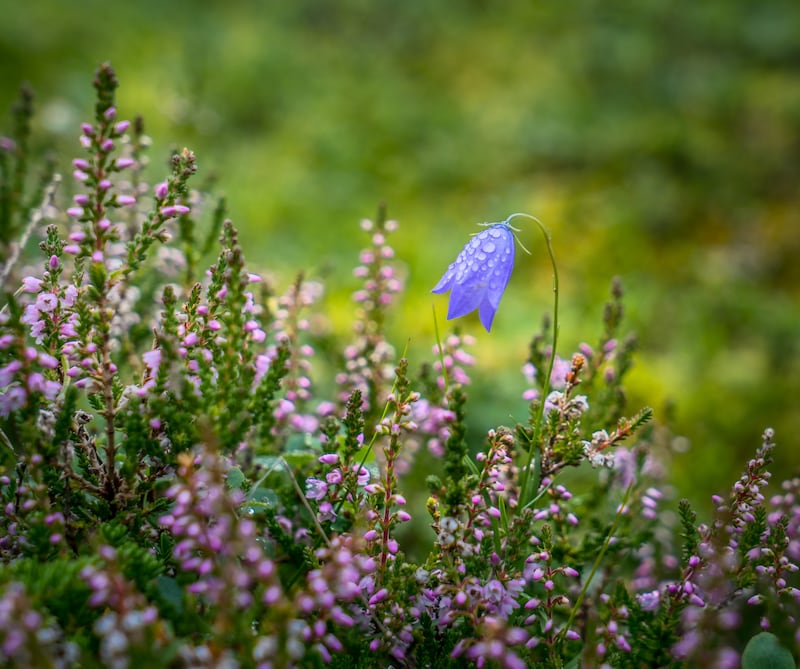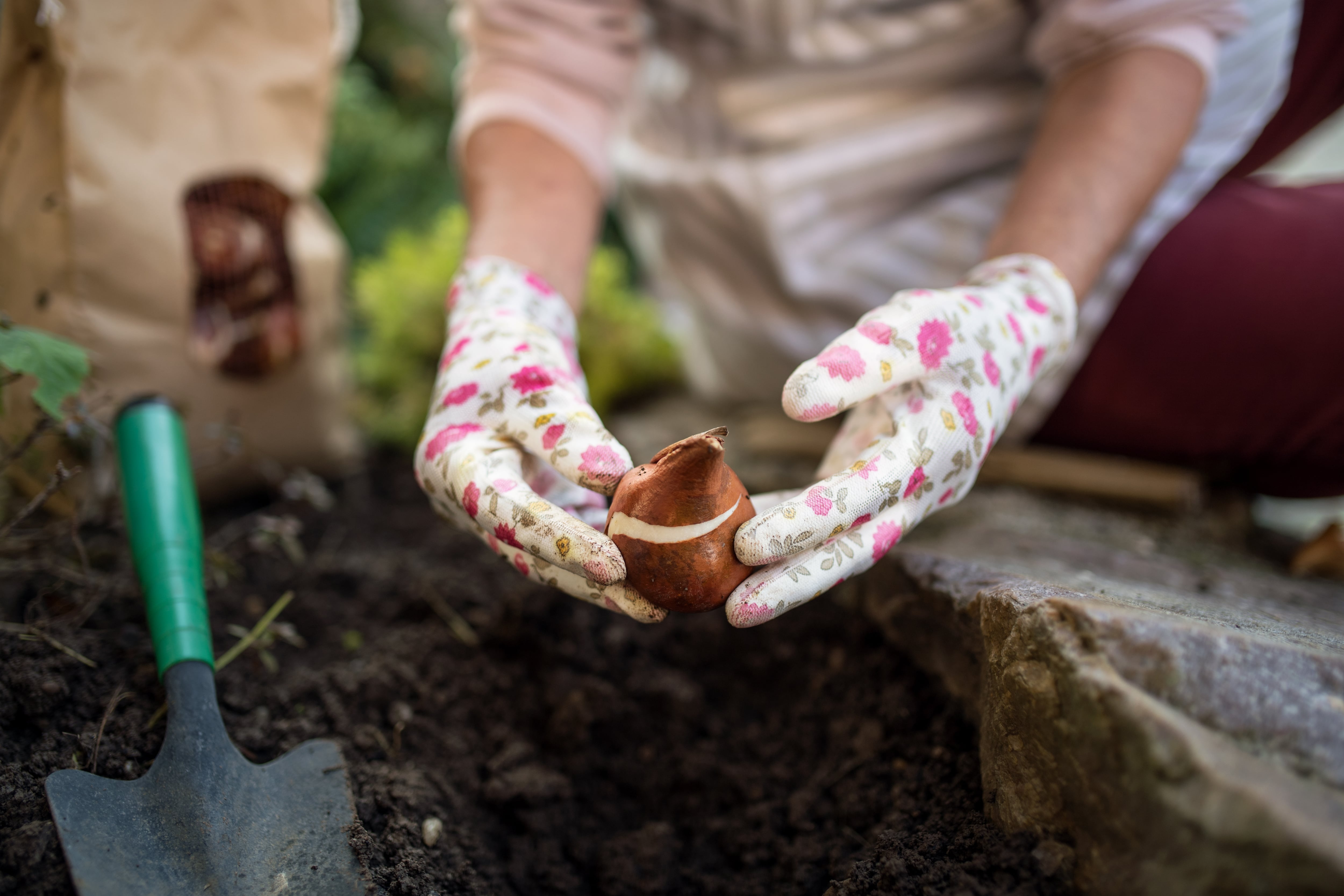In our new-old country garden, right next to the small farmhouse that has stood on the gently sloping site for more than 200 years, is a patch of sun-baked ground so stonily resistant to the sharp tines of a garden fork or the steel blade of a spade that I have had to find clever ways to get plants to grow.
It hasn’t been easy. But one strategy that has worked is generously broadcasting the fresh seed of a coterie of species known to flourish in exactly these kinds of challenging growing conditions. The result is a variety of resilient perennials, biennials and annuals whose seedlings have somehow found a way to penetrate the soil and flourish.

Examples include Linaria purpurea, or toadflax as it’s commonly known, grown from ripe seed pilfered from the faded flowerheads of a friend’s garden. An airy plant with tall, slender flowers that come in shades of lavender and shell pink, it’s much loved by visiting pollinating insects. Another is verbascum phoeniceum, or purple mullein, whose tall spires of purple, pink and white flowers emerge from low rosettes of foliage at this time of year and are followed by ornamental seedheads.

Others include the orange-flowered Californian poppy (eschscholzia californica); love-in-a-mist (nigella); the double-flowered form of feverfew (tanacetum/matricaria parthenium), Canterbury bells (campanula medium) and the dainty, purple-flowering geranium pyrenaicum Bill Wallace, all of which I encourage by regularly harvesting their ripe seeds and then broadcasting them about.
READ MORE
[ Natural liquid nettle feed is superb for keeping your plants healthy – it just smells terrible ]

These resilient colonisers have been joined by other species that have arrived unbidden, hitching a lift in the soil of plants that came from other gardens. They include the golden foam spurge, euphorbia stricta Golden Foam, a hardy, short-lived perennial useful for its floaty clouds of nectar-rich, lime-green flowers which appear throughout the summer; and the giant silver mullein, verbascum bombyciferum, and the pretty herb known as evening primrose (oenothera biennis).
Many of the above are prolific self-seeders, so enthusiastically sprinkling their progeny about the place that some would class them as invasive, a word capable of casting fear into the heart of the most intrepid gardener. And with good reason, because the line between a resilient species and one that’s difficult or even impossible to control can sometimes be a surprisingly fine one to navigate.
The plan here is to take an attitude of benign vigilance, lightly editing when and where required but generally allowing nature to take the lead
Perhaps the best-known example is the thuggish weed known as Japanese knotweed (fallopia japonica). Widely cultivated as a hardy ornamental garden plant right up until the middle of the 20th century, it was once heartily recommended by no less a personage than the famous garden designer and plantsperson Gertrude Jekyll who praised its “quick-growing ways”, as well as (before he realised his error) the Irish designer and writer William Robinson. Another is crocosmia or montbretia, the hardy, summer-flowering bulbous perennial that is the bane of some (but not all) Irish gardeners.
Other invasive or potentially invasive species that were once grown or are still found growing in Irish gardens include rhododendron ponticum; old man’s beard (clematis vitalba); the Hottentot fig (carpobrotus edulis); and Indian balsam (impatiens glandulifera). All are so vigorous that in the right conditions they’re capable of gradually crowding out native, less vigorous species to form a dense near-monoculture where they reign supreme.
As scary as that sounds, it’s important to note that these represent only a tiny minority of the tens of thousands of other non-native species that happily grow in our gardens, allotments and parks without negatively affecting biodiversity or compromising healthy, already immeasurably complex ecosystems. The vast majority of these non-natives are not invasive, or have become naturalised in a way that we’ve long ago come to consider culturally acceptable, whether that’s drifts of narcissi and snakeshead fritillaries making themselves entirely at home in a semiwild corner, or the baby beech and horse chestnut trees that can often be seen gently colonising Irish woodlands.
The same goes for the clutch of vigorous non-native species of self-seeders that I’ve nominated to colonise this tricky area of my own garden. The plan here is to take an attitude of benign vigilance, lightly editing when and where required but generally allowing nature to take the lead. Will I live to rue the day? Only time will tell. Either way, I don’t think mother nature is going to care very much. As climate change continues to radically reshape our world, she has far more important things on her mind.
Q: I recently repotted my acer into a bigger pot, however it now is looking dead. Can you offer any advice? WT, England
A: The trick to successfully repotting any established tree or shrub is to do it as quickly as possible, ideally in either autumn or early spring to minimise root disturbance, using a larger pot or tub and a very good quality potting compost to replant the root ball to the original planting depth. A generous watering immediately after repotting will also help to get rid of any air pockets in the compost, encouraging good contact between it and the plant’s root system.
Given that you’re growing your acer in a pot, I’m assuming that it’s very probably what’s known as a Japanese maple (acer palmatum or acer japonicum), two relatively slow-growing species known for their very ornamental leaves, beautiful autumn colour and elegant growth habit. These trees need a sheltered, lightly shaded spot with protection from cold winds. When grown in a pot, their delicate root systems can also be very vulnerable to harsh winter frosts unless protected with bubble wrap or hessian.
Japanese acers also really dislike poorly drained growing conditions, which is why it’s often recommended to raise the pot or tub slightly off the ground using what are known as pot feet. Finally, they also are very sensitive to any changes of soil level. In fact the RHS recommends planting to a depth where no more than an inch/2.5cm depth of compost covers the tree’s main root system.
It may be the case that you’ve replanted your acer too deeply, in which case you’ll need to gently lift the root ball to return it to its original planting depth. Another possible reason for it looking so unhappy is that you’ve neglected to water it sufficiently or have overwatered it. Alternatively, it’s possible that your tree is suffering from transplant shock and will take time to gradually recover its equilibrium.
But the good news is that it’s unlikely that it’s dead. To check, gently scratch the trunk and branches with your fingernail. If it reveals green plant tissue, this is a good sign that it’s still alive but just sulking. Keep it regularly watered (but not sodden), work a little slow-release organic fertiliser into the upper layer of the fresh compost (this should ideally be a John Innes No 2 compost or an ericaceous compost with some added grit for drainage), and then bide your time. The chances are good that fresh growth will slowly but surely begin to appear.
This week in the garden
Continue deadheading early summer flowering perennials and roses to prolong their flowering display. A potash-rich liquid feed applied as a foliar feed or soil drench around the roots of the plant will also help to encourage the production of fresh flowers.
Sow seed of hardy biennials such as foxgloves, sweet William, wallflower, Canterbury bells and honesty for sturdy young transplants that can be moved into their permanent growing position in autumn. For reliably high germination rates, sow into pots filled with a very good quality seed compost such as Klassmann’s, leavened with a little fine vermiculite and then cover with glass or a sealed clear plastic freezer bag until the baby seedlings emerge. Recommended seed suppliers include all good Irish garden centres as well as online stockists such as seedaholic.com and mrmiddleton.com.
Dates for your diary
Sunday, June 9th: Buds and Blossoms Laois garden festival, Spink sporting ground, Abbeyleix, Co Laois, which offers a great selection of specialist plant nurseries, as well as guest speakers Frances Tophill of BBC Gardeners’ World, Carl Wright of Caher Bridge Garden in Co Clare and John Jones, host of the Master My Garden podcast. See laoisgardenfestival.com.
Also on Sunday, June 9th (2pm-6pm), Rathmines Open Gardens 2024 takes place with the opening of several private gardens to the public along with Trinity Botanic Garden, where the map of gardens can be viewed. For information contact Michael Kelly on 087-6697722.
















